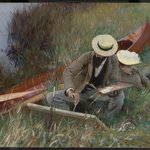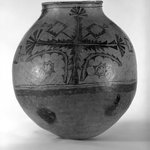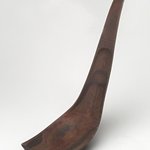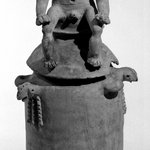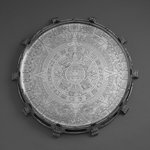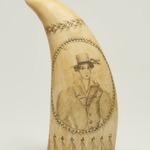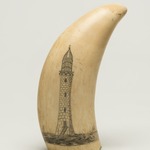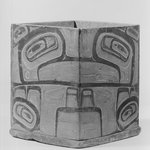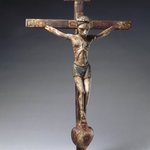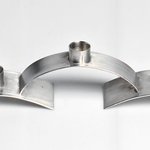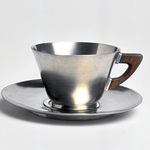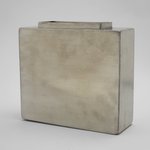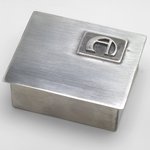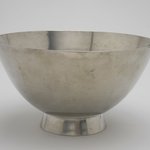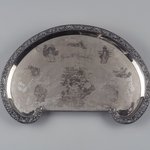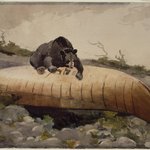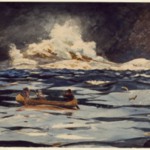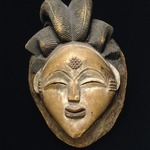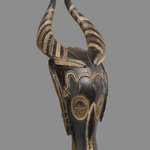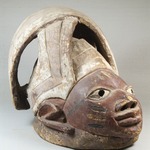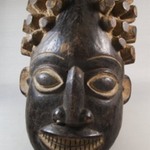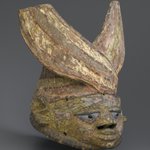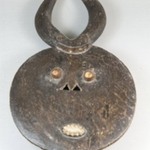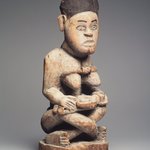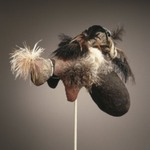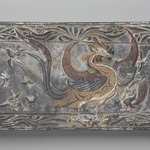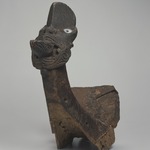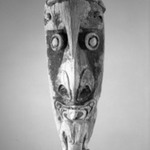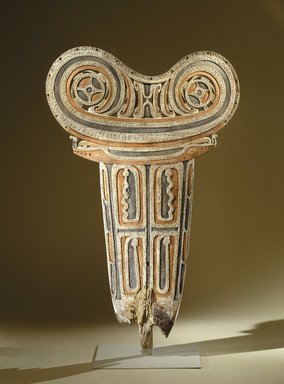
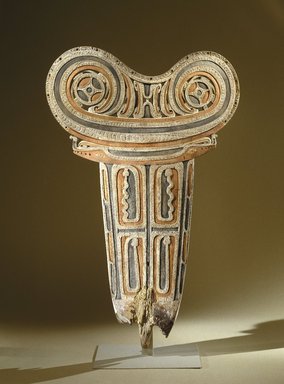
Canoe Breakwater (Rajim), 20th century. Wood, pigment, 51 1/2 x 32 3/4 x 3 1/2 in. (130.8 x 83.2 x 8.9 cm). Brooklyn Museum, Purchased with funds given by Mr. and Mrs. Milton F. Rosenthal, 80.2. Creative Commons-BY (Photo: Brooklyn Museum, 80.2_SL1.jpg)
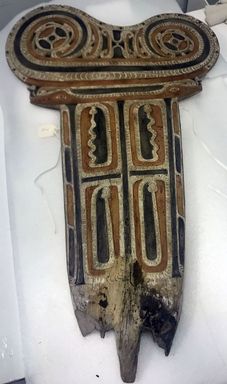
Canoe Breakwater (Rajim), 20th century. Wood, pigment, 51 1/2 x 32 3/4 x 3 1/2 in. (130.8 x 83.2 x 8.9 cm). Brooklyn Museum, Purchased with funds given by Mr. and Mrs. Milton F. Rosenthal, 80.2. Creative Commons-BY (Photo: , CUR.80.2_overall.jpg)

Canoe Breakwater (Rajim), 20th century. Wood, pigment, 51 1/2 x 32 3/4 x 3 1/2 in. (130.8 x 83.2 x 8.9 cm). Brooklyn Museum, Purchased with funds given by Mr. and Mrs. Milton F. Rosenthal, 80.2. Creative Commons-BY (Photo: Brooklyn Museum, CUR.80.2_print_front_bw.jpg)

Canoe Breakwater (Rajim), 20th century. Wood, pigment, 51 1/2 x 32 3/4 x 3 1/2 in. (130.8 x 83.2 x 8.9 cm). Brooklyn Museum, Purchased with funds given by Mr. and Mrs. Milton F. Rosenthal, 80.2. Creative Commons-BY (Photo: , CUR.80.2_detail08.jpg)

Canoe Breakwater (Rajim), 20th century. Wood, pigment, 51 1/2 x 32 3/4 x 3 1/2 in. (130.8 x 83.2 x 8.9 cm). Brooklyn Museum, Purchased with funds given by Mr. and Mrs. Milton F. Rosenthal, 80.2. Creative Commons-BY (Photo: , CUR.80.2_detail06.jpg)

Canoe Breakwater (Rajim), 20th century. Wood, pigment, 51 1/2 x 32 3/4 x 3 1/2 in. (130.8 x 83.2 x 8.9 cm). Brooklyn Museum, Purchased with funds given by Mr. and Mrs. Milton F. Rosenthal, 80.2. Creative Commons-BY (Photo: , CUR.80.2_detail07.jpg)

Canoe Breakwater (Rajim), 20th century. Wood, pigment, 51 1/2 x 32 3/4 x 3 1/2 in. (130.8 x 83.2 x 8.9 cm). Brooklyn Museum, Purchased with funds given by Mr. and Mrs. Milton F. Rosenthal, 80.2. Creative Commons-BY (Photo: , CUR.80.2_detail10.jpg)

Canoe Breakwater (Rajim), 20th century. Wood, pigment, 51 1/2 x 32 3/4 x 3 1/2 in. (130.8 x 83.2 x 8.9 cm). Brooklyn Museum, Purchased with funds given by Mr. and Mrs. Milton F. Rosenthal, 80.2. Creative Commons-BY (Photo: , CUR.80.2_detail09.jpg)

Canoe Breakwater (Rajim), 20th century. Wood, pigment, 51 1/2 x 32 3/4 x 3 1/2 in. (130.8 x 83.2 x 8.9 cm). Brooklyn Museum, Purchased with funds given by Mr. and Mrs. Milton F. Rosenthal, 80.2. Creative Commons-BY (Photo: , CUR.80.2_detail03.jpg)

Canoe Breakwater (Rajim), 20th century. Wood, pigment, 51 1/2 x 32 3/4 x 3 1/2 in. (130.8 x 83.2 x 8.9 cm). Brooklyn Museum, Purchased with funds given by Mr. and Mrs. Milton F. Rosenthal, 80.2. Creative Commons-BY (Photo: , CUR.80.2_detail01.jpg)

Canoe Breakwater (Rajim), 20th century. Wood, pigment, 51 1/2 x 32 3/4 x 3 1/2 in. (130.8 x 83.2 x 8.9 cm). Brooklyn Museum, Purchased with funds given by Mr. and Mrs. Milton F. Rosenthal, 80.2. Creative Commons-BY (Photo: , CUR.80.2_detail02.jpg)
Canoe Breakwater (Rajim)
Arts of the Pacific Islands



